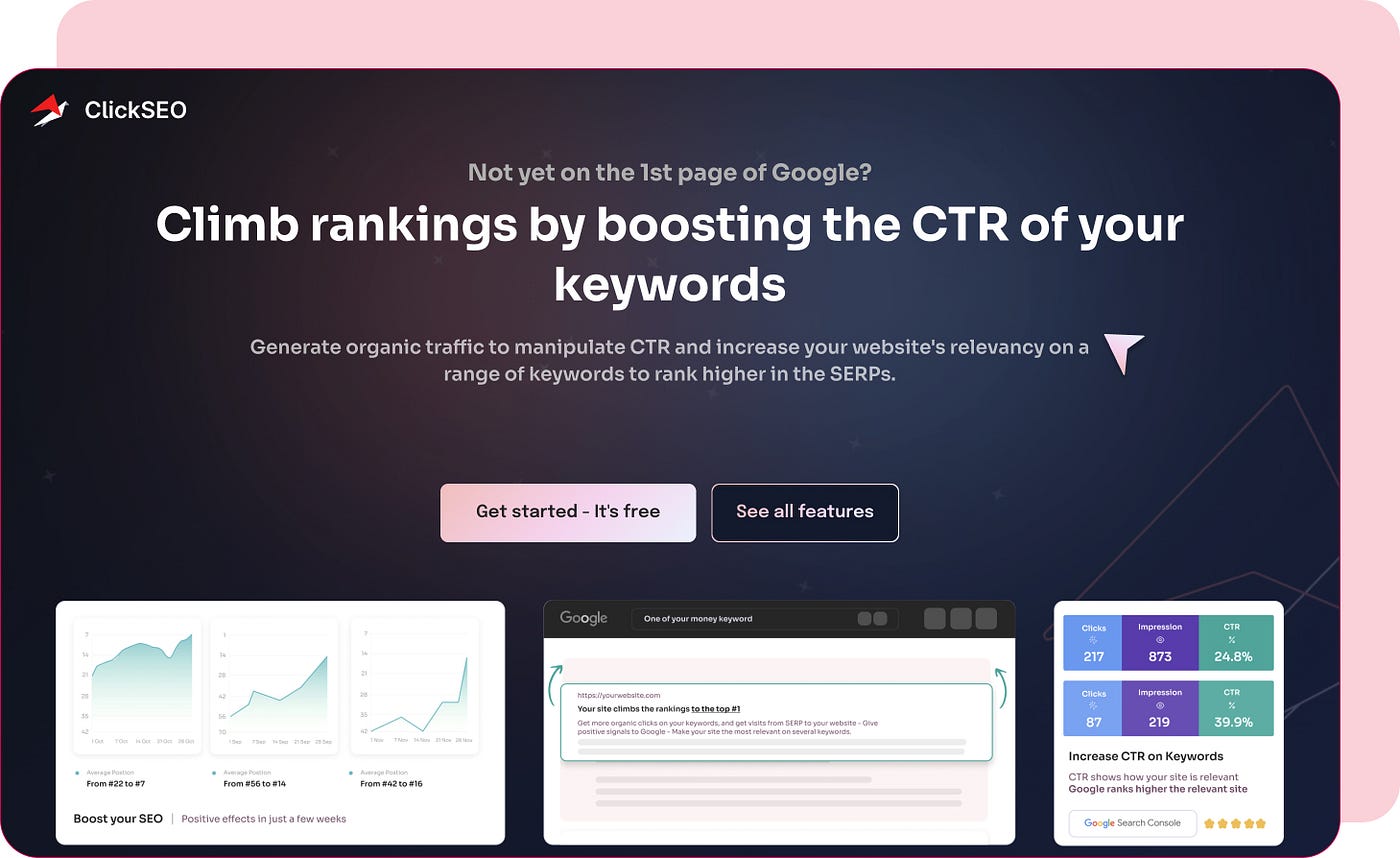Engagement Techniques: The Value of CTR Control
In the realm of digital marketing, understanding and adjusting Click-Through Price (CTR) functions as a foundation for reliable engagement methods. As an essential metric that shows exactly how well material resonates with its intended audience, CTR can be influenced by various methods, from the crafting of headlines to the combination of visuals. Nevertheless, the subtleties of CTR control expand past simple numbers; they tap right into the psychology of target market communication. The expedition of these techniques exposes important understandings that can reshape your method to engagement, prompting a reevaluation of your existing practices. What might these understandings involve?
Recognizing Click-Through Rate
Although the concept of click-through rate (CTR) might appear straightforward, it plays a critical role in assessing the performance of digital advertising and marketing projects. CTR is specified as the ratio of individuals that click a particular web link to the variety of complete individuals that view the associated material, usually revealed as a percentage. This metric acts as an essential performance indication (KPI) for analyzing the success of different online advertising approaches, consisting of e-mail marketing, social networks ads, and internet search engine marketing.
A high CTR suggests that the material reverberates with the target audience, motivating them to involve further with the product. Conversely, a reduced CTR might indicate that the content stops working to catch interest or deliver worth.
Variables Influencing CTR
Several elements dramatically influence click-through price (CTR), shaping just how effectively content captures target market focus. One essential aspect is the relevance of the content to the target audience. When content aligns closely with users' requirements and passions, it normally increases involvement and increases CTR.
One more important element is the top quality and clearness of the heading or subject line. Engaging headings that evoke inquisitiveness or supply clear worth recommendations can attract customers to click. Furthermore, the visual allure of web content, including photos and format, plays a vital role; properly designed visuals can draw in focus and encourage interaction.
When the target market is most active can lead to greater engagement prices,Timing likewise impacts CTR; publishing content. In addition, the positioning of links within content is substantial; purposefully placing calls-to-action can assist individuals toward clicking.
Lastly, customer trust and reputation impact CTR. Web content from acquainted brand names or reputable sources normally amasses even more clicks, as customers are much more likely to engage with content they view as trustworthy. By understanding and leveraging these factors, marketers can enhance their material strategies and maximize CTR properly.
Methods for CTR Adjustment
Reliable methods for click-through price (CTR) manipulation can significantly boost online interaction and drive traffic. One of one of the most impactful strategies is enhancing headings and titles. Crafting compelling, concise, and helpful headlines captures the target market's focus and motivates clicks. Incorporating numbers, concerns, or psychological triggers can further boost their efficiency.
An additional method entails the tactical use meta summaries. A well-written meta summary supplies a concise summary of the content while luring customers to click. CTR Manipulation Service. Utilizing action-oriented language and clear value recommendations can enhance CTR
Aesthetic components also play a crucial function. Including appealing photos, infographics, or video clips can attract customers' focus, making the material more appealing. Additionally, A/B testing different visuals can yield insights into what resonates most with the target audience.
Lastly, leveraging social evidence, such as customer testimonials or testimonials, can develop reputation and encourage clicks. Showing the appeal of web content or highlighting endorsements promotes trust and attracts individuals to involve.
Measuring Interaction Successfully
Gauging engagement efficiently is crucial for recognizing the influence of CTR manipulation approaches. Engagement metrics offer understandings into how customers communicate with material, revealing the performance of different techniques used to boost click-through prices. Secret performance signs (KPIs) such as bounce price, time on web page, and web pages per session need to be checked very closely. These metrics help analyze whether the rise in CTR translates to meaningful user interaction or simply mirrors superficial clicks.

In addition, segmentation evaluation can determine which target market demographics are most involved, enabling customized content distribution that resonates with certain teams. Tools like Google Analytics or warm mapping software program can picture customer habits, highlighting areas of look at this site passion or friction within the web content.
Ultimately, a comprehensive approach that incorporates qualitative and quantitative data is crucial for accurately determining involvement. This complex evaluation will inform the ongoing refinement of CTR manipulation approaches, making sure alignment with individual assumptions and boosting general performance.
Study and Success Stories

In the technology market, a software application firm used A/B screening on their landing web pages, try out different headings and call-to-action buttons. The maximized version led to a remarkable 60% rise in CTR, directly associating with a rise in test sign-ups and subsequent subscriptions.
Similarly, a non-profit organization overhauled their contribution page utilizing psychological narration and engaging visuals. By strategically manipulating their material and layout, they attained a 35% greater CTR, equating to a significant rise in contributions.
These instance studies show how meticulous approaches bordering CTR adjustment can boost customer engagement, inevitably driving conversion rates. By comprehending audience preferences and leveraging information analytics, organizations across numerous industries can realize significant renovations in their involvement metrics, showcasing the profound influence of thoughtful digital advertising and marketing techniques.

Verdict
To conclude, efficient engagement strategies are greatly reliant on the control of Click-Through Rate (CTR) as a vital metric for content success. By using methods such as maximized headings, engaging visuals, and A/B testing, marketing experts can considerably improve CTR and, subsequently, target market interaction. In addition, the application of segmentation analysis assists in customized material distribution, causing enhanced return on investment. Ultimately, a critical focus on CTR control fosters deeper links with target demographics, yielding transformative interaction content end results.
CTR is defined as the ratio of customers who click on a specific web link to the number of overall users that watch the connected content, generally shared as a percentage.Numerous factors substantially affect click-through rate (CTR), shaping just how effectively material captures target market focus. When material aligns closely with customers' rate of interests and demands, it naturally enhances involvement and boosts CTR.
By understanding and leveraging these variables, marketing experts can enhance their material approaches and optimize CTR efficiently.
In verdict, reliable engagement techniques are greatly dependent on the manipulation of Click-Through Rate (CTR) as an essential metric for content success.
Comments on “LinkDaddy CTR Manipulation: A Comprehensive Solution for Enhancing Click-Through Rates”